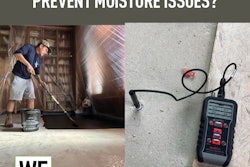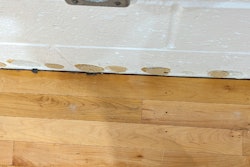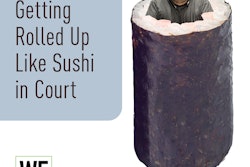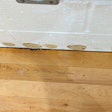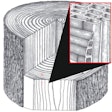We discussed the testing of RH and moisture in slabs in the last two posts (see Part 1 on calcium chloride and Part 2 on relative humidity). Many of you commented and suggested great points as to why use one test over the other. Let me review some of my thoughts about the tests; realize that I use both types of tests depending on the scenario. I will argue the points in a way that might imply I like one over the other. That might be true, but, more importantly, I want you to be entertained because, after all, remember? I find concrete boring. Anyway:
Calcium chloride tests have a lot of room for what I refer to as human error. You must remove the test from its packaging (not spilling anything), weigh it on a gram scale, calculate the hours, put in the numbers in the equation and come up with the result. Really? Put numbers in an equation? Formula? Multiply, divide, add and subtract? Do you remember the last time you entered a room in your house and couldn't remember what you went in there for? You were just standing there going "What was I going to do here?" Well, you get the point. Simple tests are easier on the brain. All you have to do with the RH test is insert the reader into the sensor and you get a number. Easy does it.
The counter argument for the RH test is: How do you know that the sensor and/or reader are accurate? Well, you don't. Much like using a laser instead of a chalk line, you rely on a digital product. Could be on, could be off. The calcium chloride test also needs the surface profiled. You can't just place the CC test on the concrete. You must use a power tool to rough up the surface. The test calls for a specific profile. Much like sanding wood, you are basically putting scratches in the concrete. How to get the right texture on the surface? Oh well, the international concrete repair institute formed a standard for concrete surface profiles (CSP) and … see where I'm going with this? Boring! And a lot of room for human error. If you don't record your results and process, you could be very easily challenged in court.
Calcium chloride tests are cheap and if you break one, well, get another. RH kits are a little more expensive, so if you're doing one job over concrete a year, you might not like to spend that much money. Calcium chloride tests are placed over the surface of the slab. One can very easily walk over them, crews working on site might accidentally kick them and ruin your test. Stuff happens. With RH, the sensor sits down in a hole, like Alice in Chains. Cannot be bothered.
RELATED: Understand the Science of Water and Wood Floors
RH is great for one major reason and it is to record the drying process of a slab. You can place the sensor in the slab and revisit it many times to check the RH levels. With calcium chloride, once it's done, it is garbage. What else? Technical stuff: calcium chloride will measure the emission of vapor at the surface. The RH will measure the RH in the hole, inside the slab. Very important. The RH level inside that hole is closer to the reality the floor would experience in the future.
Oh, how do you make a hole in the slab? It has to be done with a hammer drill. Yes, I get to use my extreme Bosch hammer drill. Well, for like 15 seconds, but still. It is fun. Two major points about drilling the hole:
1) It has to be at 40% depth with a slab drying from one side and at 20% depth with a slab drying from both sides. Go figure out the exact thickness of the slab. Human factor goes into play. What if you don't even know how thick it is and you guessed? Or listened to the general contractor who said it was 6" (15.24 cm) thick?
2) You need to drill into a surface you can't see through. It is like the carpet guys cutting through the carpet slicing my wood floors underneath-talent at play. What could be inside the slab? Well, other than drainage pipes, radiant heat tubes and others, you could be drilling into a post-tension slab. A post-tension slab (as mentioned in earlier comments by Scott and Johannes) is a slab that has tendons (steel cables) running through it that give it more tensile strength. You can see the connectors for the tendons outside the house looking at the foundation (usually the bottom of the stem wall). Anyway, don't drill into one of those. If you do, you will be in for a lot of money. You can also check out scenario 3 in my article "Do the Right Thing: Real Wood Floor Job Site Dilemmas."
I made it clear we were going to cover the topic very briefly because it was boring and I wanted to go back to technical wood-related topics. Boring or not, it is a very important topic. A floor technician must understand how to test concrete slabs and how the levels of RH and/or moisture affect the final installed flooring product. If you need more help or technical training, contact the NWFA at (800) 422-4556. Next time you need to install a wood floor over a concrete slab, I hope you will think about this post and conduct your tests accordingly.















